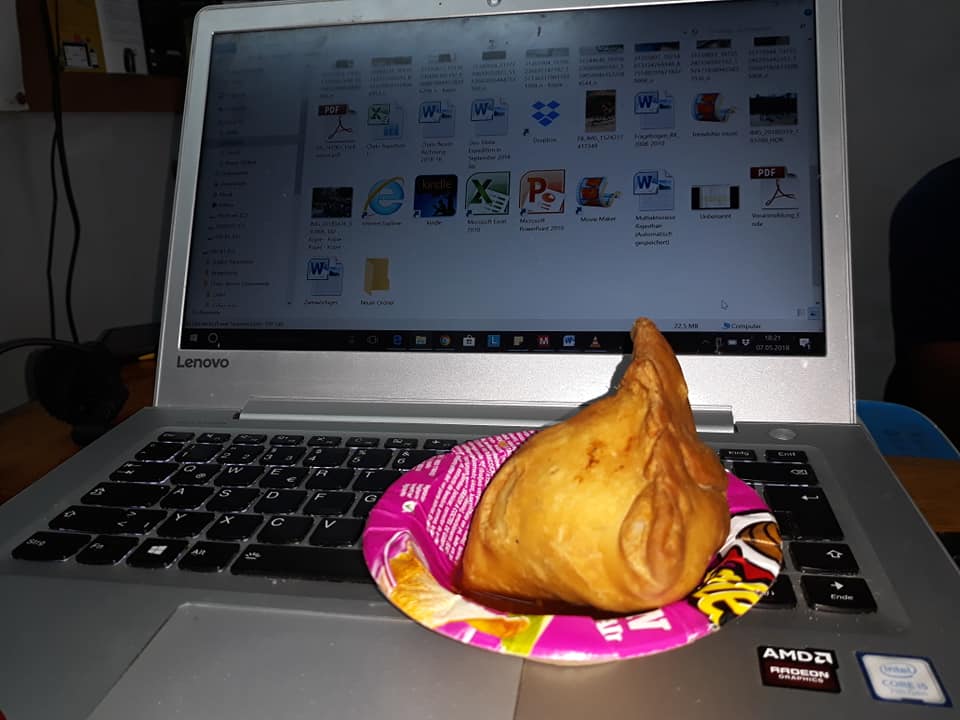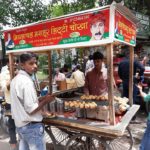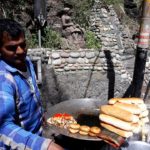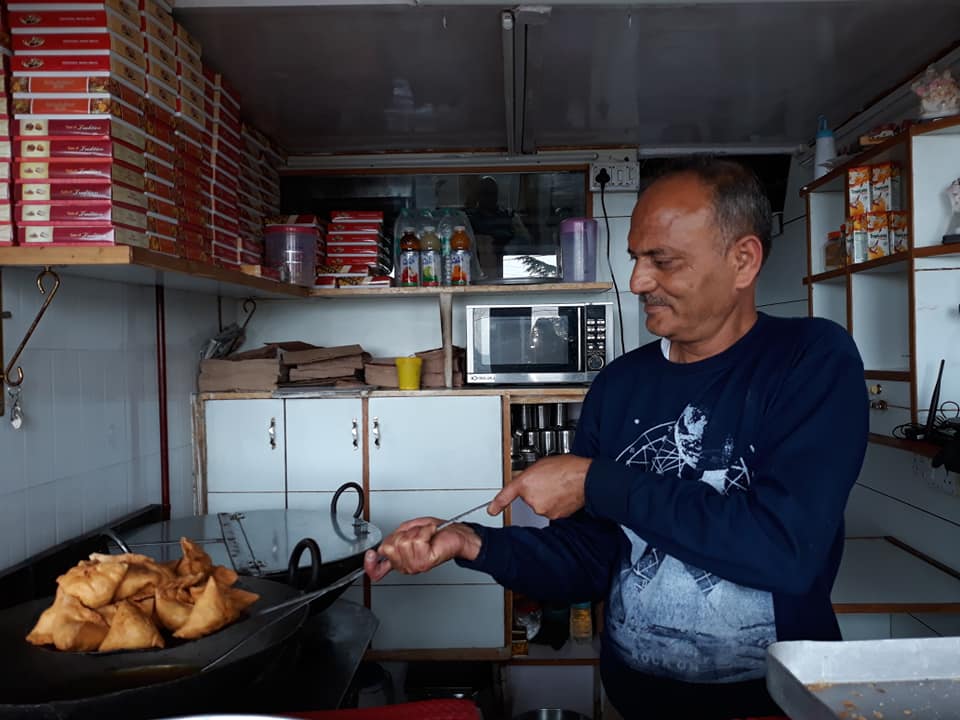
In India, almost every man is a businessman as well. Be it the vegetable seller, the shoe cleaner or the tailor. Almost everyone runs their own small business. Most of the time, the “business” is set up and dismantled on the street for a day or one owns a small garage with a sliding shutter in front of it.
In the morning, the necessary utensils and goods such as baskets full of vegetables, fabrics, shoe soles, laces and sewing machines are set up on the edge and partly also on the street and then the day-to-day business would start
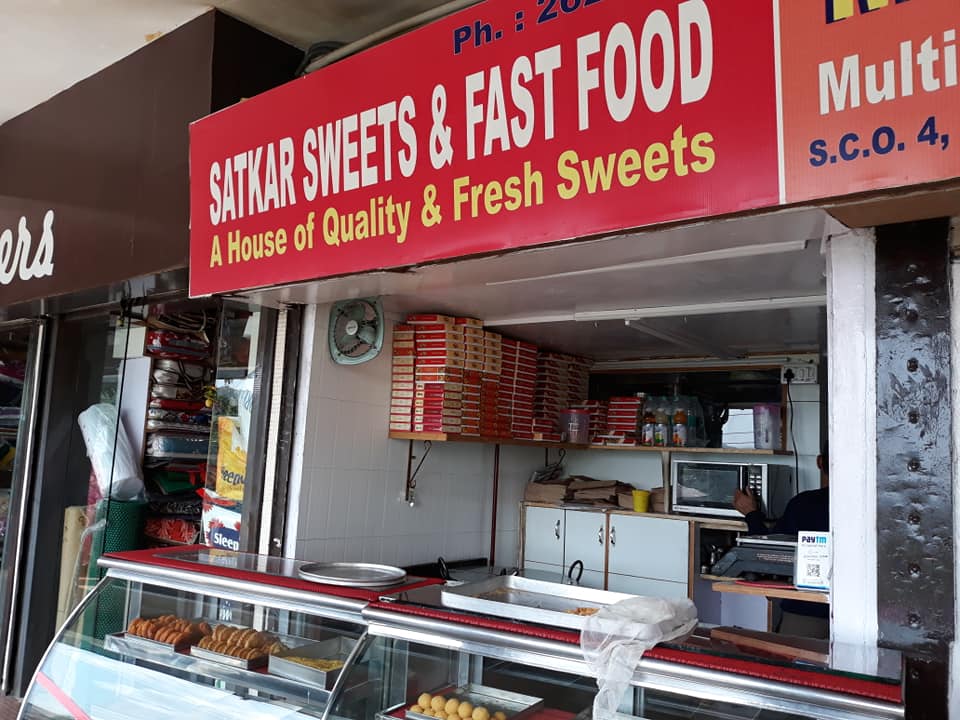
Such a businessman is also Mr. Satkar together with his wife and the only employee, he runs the small Indian sweets and snack shop ” Satkar Sweets and Fast Food” in a small business district in Shimla. His employee puts three tables and 10 chairs outside in the morning and then it goes to work and it is melted, kneaded, baked and cooked.

It never seems to be really stressful. With Indian calm and serenity, the work here is done one after the other.
The emphasis on the title here is really on SMALL. Because you have to know, that in this small business district almost every 50 m such a shop is run to provide the businessmen and women with daily snacks, sweets and lunch.
So the competition is great and you depend on your regular customers. To keep them, Mr. Satkar relies not only on quality, but also on a good relationship.
So it is not uncommon to come by, add a freshly prepared sweet or serve an extra portion of rice for lunch.
In addition to the salty and sweet treats, Mr. Satkar prepares a daily changing lunch for the surrounding shopkeepers and employees.

He gives out around 15 to 18 meals daily, consisting of rice, lentils and a yoghurt sauce.
Lunch is simple, but good and above all cheap. No more than 30 rupees (approx. 40 cents) are paid for one portion.

But Mr. Satkars gets the realsuccess due to his sweets. Because he really does the best and that many know – even beyond the borders of the business district. He prepares about thirteen different types. The quantity is never very large, so you have to be fast to get a piece of your fresh treats. The decision on what sweet to choose, is not so easy, because his Laddus (sweet balls), Barfi (boiled milk cubes), Besan (made of lentil flour) and Gulab Jamun (balls in rose water) are all delicious.
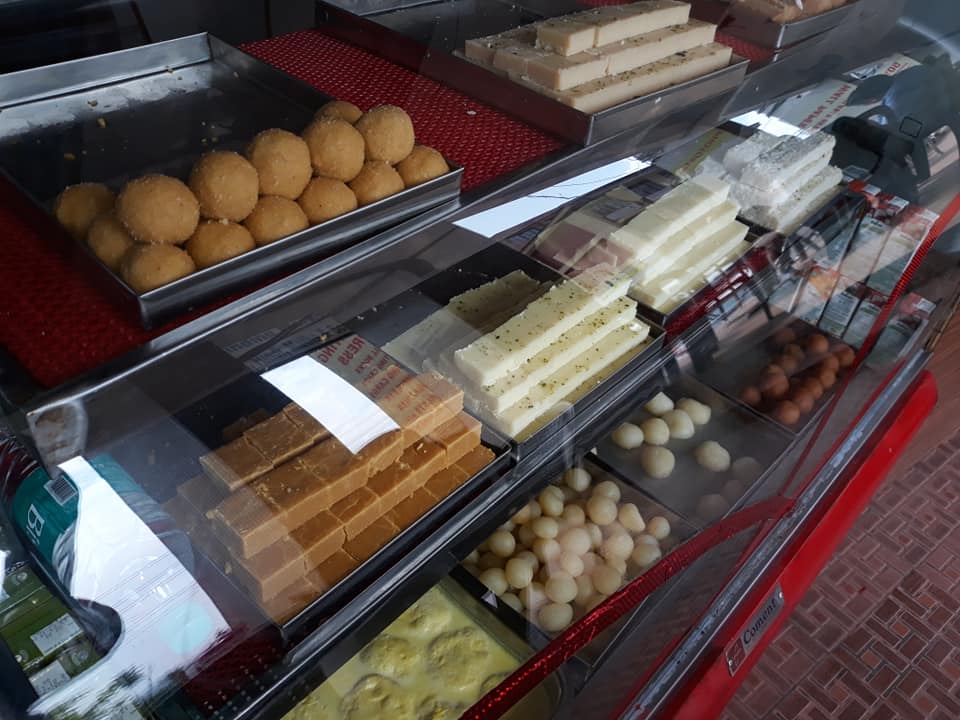
Then there’s a cup of Indian chai and the sugar level is back to a level where you can work productively. Mr. Satkar, by the way, sells around 50 teas a day.
He also takes orders for festivities and weddings. He is particularly busy before major Indian holidays.
But the real highlight of Mr. Satkar’s offer is his Samosa.

Samosa is the most famous Indian snack.. The baked dough bags with potato filling are available in Shimla on every street corner. With a chutney of mint and coriander or sweet tamerinde, the still warm crispy and spicy samosas are a real treat.
But a samosa is not a samosa: some samosas are too spicy, too oily, too small, too soft… The right amount of ingredients with the right preparation – that’s what matters. And it seems that Mr. Satkar has perfected his secret recipe.
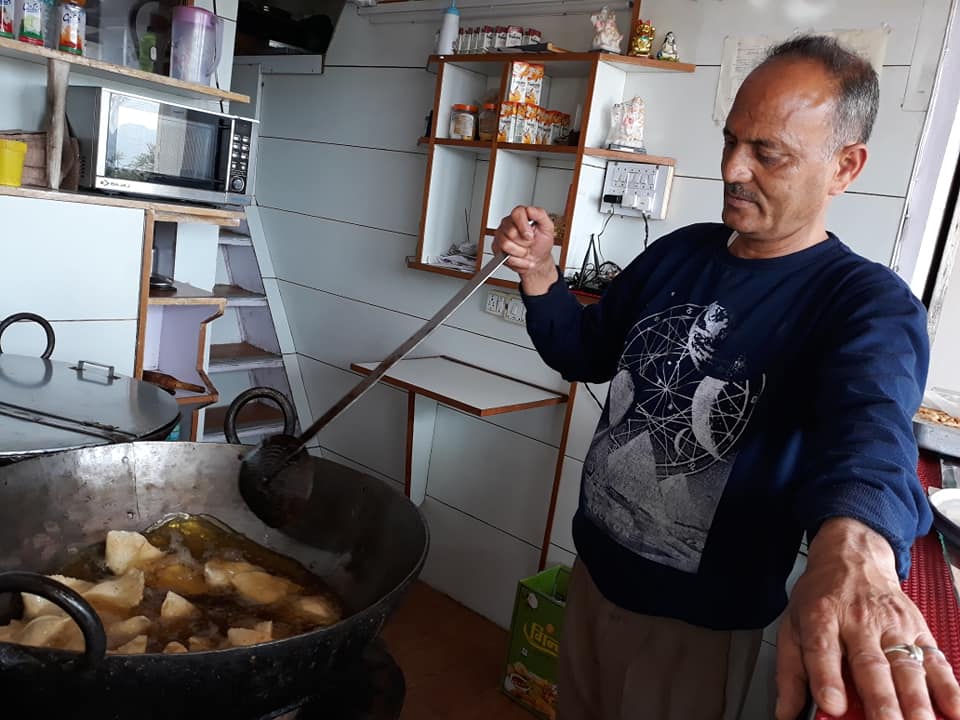
In the last two months I’ve known Mr. Satkar’s shop, I’ve probably had more Samosa, than in my last eight years together in India. It’s just too resist these crispy pieces and on so many days, I set off to treat myself to a samosa in the afternoon. WIth 10 rupees (15 cents) the piece you can bring your friends and drink a tea along with it..
If you are sitting at your home place and reading this article and would like to bite into a warm samosa, for those I have the recipe here:
Samosa Dough
- 2 cups flour
- 2 tbsp oil
- 1/4 tsp salt
- 1/2 cup water + and some tbsp extra
Samosa Filling
- 2 tbsp oil
- 1 tsp coriander seeds
- 1/2 tsp cumin seeds
- 1 tbsp fresh ginger paste
- 1 tbsp fresh garlic paste
- 1 tsp red chilli flakes
- 2 tsp ground coriander
- 3/4 tsp ground turmeric
- 2 large potatoes, cooked, peeled and roughly squeezed
- 1- 2 tsp salt
Preparation
Samosa dough:
- Knead a smooth dough from the ingredients
Samosa filling:
- Heat the oil and roast the coriander and cumin seeds in the oil
- Add the ginger and garlic paste
- now add the remaining spices and potato mass to the oil
- mix everything well to a uniform mass
- Set the potato mixture aside and allow to cool
Filling of the Samosa:
- Form large balls shapes and dust with flour
- Press the balls flat and roll out to 1 mm thick discs
- Halve the rolled dough in the middle and roll it into a dough bag, glue the two ends together with a little water
- Fill with 1 1/2 tbsp potato mass and close from above
Samosa frying:
- Fill a pot with about 250 ml of oil and heat
- Test with some raw dough, whether the oil is bubbling and the dough is floating on top, then the heat is good
- Add the samosa to the oil and reduce the heat
- Fry the samosa on low heat golden brown
- Remove the samosa from the oil and drain on kitchen paper.
- Eat warm with delicious chutney
